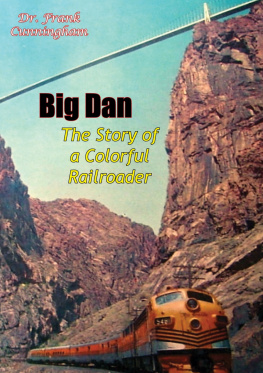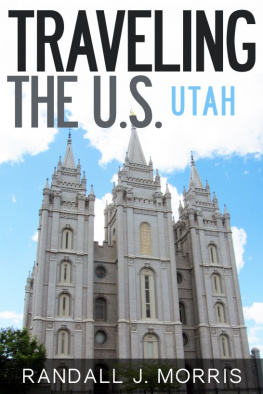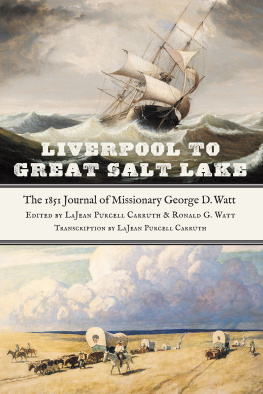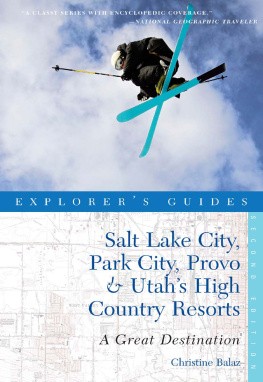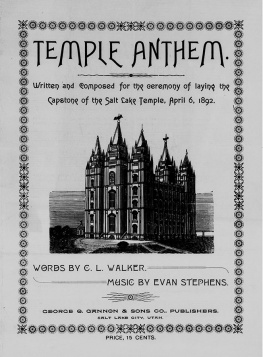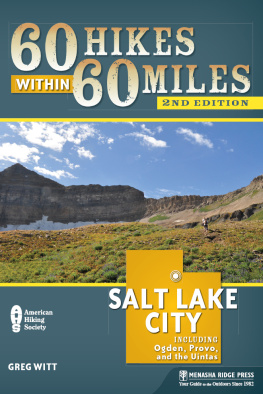

This edition is published by PICKLE PARTNERS PUBLISHINGwww.pp-publishing.com
To join our mailing list for new titles or for issues with our bookspicklepublishing@gmail.com
Or on Facebook
Text originally published in 1947 under the same title.
Pickle Partners Publishing 2016, all rights reserved. No part of this publication may be reproduced, stored in a retrieval system or transmitted by any means, electrical, mechanical or otherwise without the written permission of the copyright holder.
Publishers Note
Although in most cases we have retained the Authors original spelling and grammar to authentically reproduce the work of the Author and the original intent of such material, some additional notes and clarifications have been added for the modern readers benefit.
We have also made every effort to include all maps and illustrations of the original edition the limitations of formatting do not allow of including larger maps, we will upload as many of these maps as possible.
BIG DAN: THE STORY OF A COLORFUL RAILROADER
BY
FRANK CUNNINGHAM
TABLE OF CONTENTS
Contents
DEDICATION
To the men of Americas railroads
and especially those pioneers of
High Iron who threw rails
across the Rockies.
FOREWORD
RAILROADS have been the life lines of America over the years. This country, so vast and wide, has been solidified by communication. Over a goodly part of our history that communication has been through transportation, and that transportation in large degree has been by rail.
There are no dialects in America such as may be found in other much smaller and less travelled countries. Neither do our customs and daily habits greatly vary. The reason is that Americans get around. They do their business from coast to coast with no barriers to intervene. They work together, study together, attend sports events together, vacation together, and they travel the whole country over to do it.
One great factor stands out in all this, and that is that it has been through the operation of the Iron Horse that Americans have been able to do all these things. The railroads therefore, have been among the great builders of what we have come to call our way of life.
As the rails have been extended in a vast network over this country, the nation has grown. Think of America back in 1826 when the first railroad began its operation, running on crude wooden tracks. Contrast that with America of today. Read the thrilling story of the laying of the rails from the Atlantic to the Pacific, and you read the epic drama of westward colonization. With each advancing step of the rail lines, education was promoted, industry established and developed, cities were built, farmers broke new land because the rails offered a way to market their crops, churches enlarged their congregations, prosperity spread abroad. So the story of the rails is the story of the nation. Through the onward march of the Iron Horse, the country opened by the sweat and blisters of the men who laid the pathway of High Iron has become the ultimate realization of our nations High Hopes. The once phantom dreams of our American pioneers have been brought to life by the clang of the locomotive bell, the roar of fast moving trains, and the conductors thrilling cry of All Abroad.
But what are railroads without the men who operate them? They are but inanimate things, waiting for the master hands to move them. It takes brain, and brawn, and human understanding to operate those trains; it takes a skilful hand, a steady eye, unerring judgment, a love for fellow men and devotion to service; it takes a deep sense of responsibility for the lives and property of the public.
America has had many great railroaders in its day. One of those great ones, typical of them all, is Big Dan. Daniel G. Cunningham, after whom this book is named, knows the railroads from the ground up. He has been part of the railroad industry of this country all his adult life, and the railroad industry has been part of him. He has lived it and breathed it and sweat over it and loved it. And in response, the railroads have loved him, the men who labored with him adored him, would have sacrificed anything for him. In this respect Big Dan is a composite of so many clear headed railroad executives, and because these men were like Dan, the railroads were able to operate, and serve the land.
Dan started railroading at 18 years of age as a machinist apprentice. He worked 10 hours a day and got 6 cents an hour. When he became a full-fledged machinist, he was paid the top wage of that time, 23 cents an hour, and was glad to get it. But big men move on. Dan became general foreman on the Norfolk and Western, general foreman for the Santa Fe at Needles, Superintendent of Shops for the Denver & Rio Grande Western at Salt Lake, Superintendent of Motive Power for the Denver & Salt Lake; and Master Mechanic of the Salt Lake Division of the Rio Grande.
His life of service. His work, a labor of love. He is big in body and big in soul. His heart embraced the whole operation of the road; it took in the community. So well did the people of Salt Lake come to know him through his service in the municipality, so well did they understand his ability to make things go, that they called upon him to serve as a community leader in modernizing their city Fire Department, and named the largest truck in the department Big Dan after D.C. himself. When he was retired from active service on the railroad, he was honored by the railroad, the families of the employees, the city and the state.
It is fitting that he and the American railroads have been made co-subjects of this book. They belong together, they grew together. This volume is a tribute to the railroad industry; it is also a tribute to the men of that industry, through a most worthy representative, Big Dan Cunningham. His nephew Frank, has done America a great service in writing this volume.
MARK E. PETERSEN,
General Manager, The Deseret News
ACKNOWLEDGMENTS
Acknowledgment is given material gathered by the Association of American Railroads, Transportation Bldg., Washington D.C.
Several of the poetry quotations are from Poems of James Ryder Randall edited by Matthew Page Andrews.
Front cover jacket picture is a Currier & Ives lithograph of an Atlantic, Mississippi and Ohio train, courtesy of the Norfolk and Western.
Back cover jacket picture is courtesy of Glen Fishback, Sacramento, Calif.
End sheets picture is the Rio Grande Scenic Limited gliding over Tennessee Pass, the highest main line standard gauge crossing of the Continental Divide.
Special acknowledgment is given for the generous cooperation of Mr. George F. Dodge, Director of Public Relations, Denver and Rio Grande Western; Mr. Ken Lightburn, Director of News Bureau, Denver and Rio Grande Western; and Mr. R. R. Horner, Manager of the Advertising and Magazine Department, Norfolk and Western.
LIST OF ILLUSTRATIONS
Big Dan
Captain George Cunningham
Three Little Confederates
Virginia and Tennessee Train
The Pocahontas
Victorious Southerners
The Mighty Dictator
General Herman Haupt
Railroad Fighting in Virginia
Five Locomotives Built at Vicksburg
1838City Point Railroad
General William Mahone
The Old Dick Thomson
An A. M. & O. Passenger Locomotive
Locomotive Used by the Shenandoah Valley
Next page
